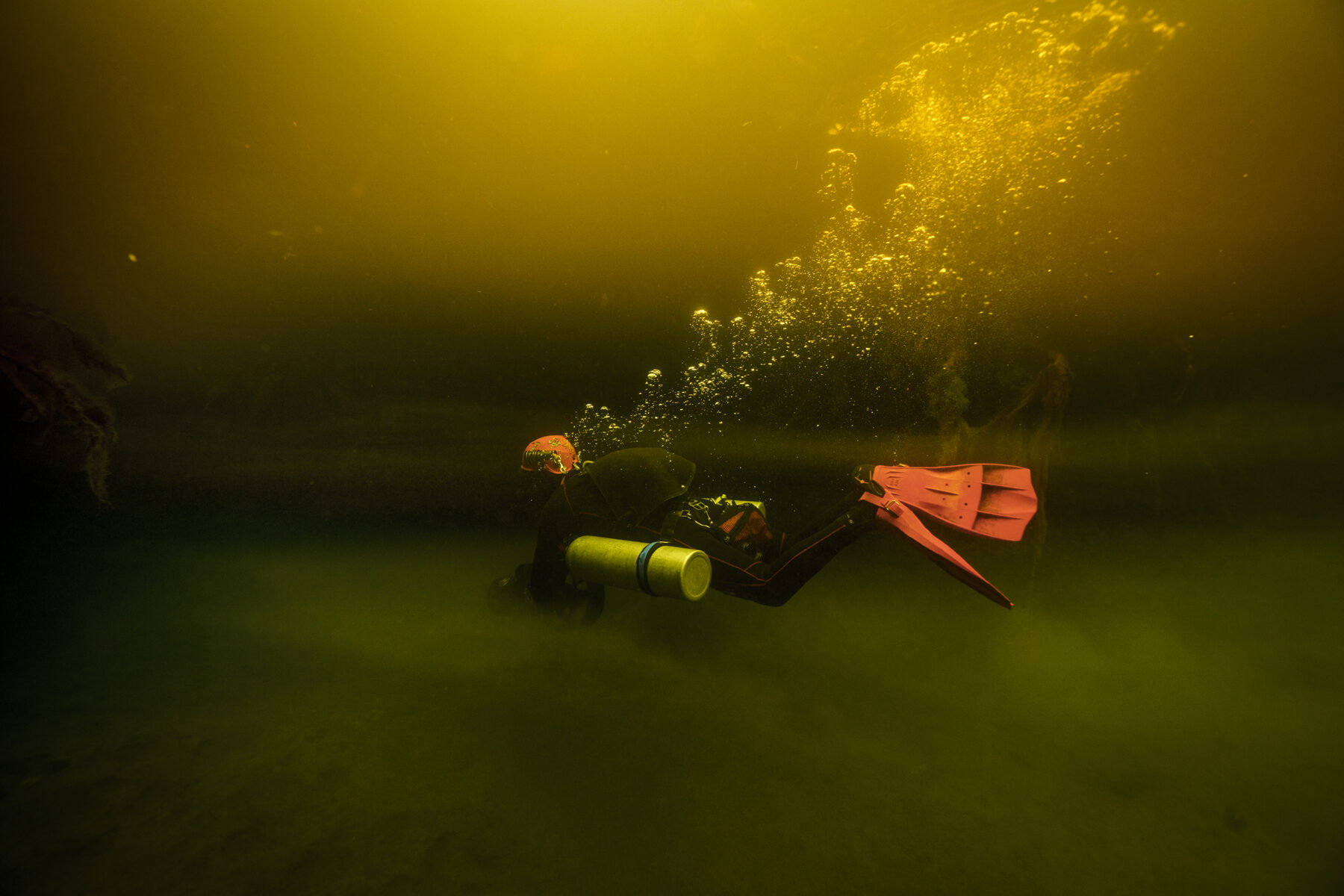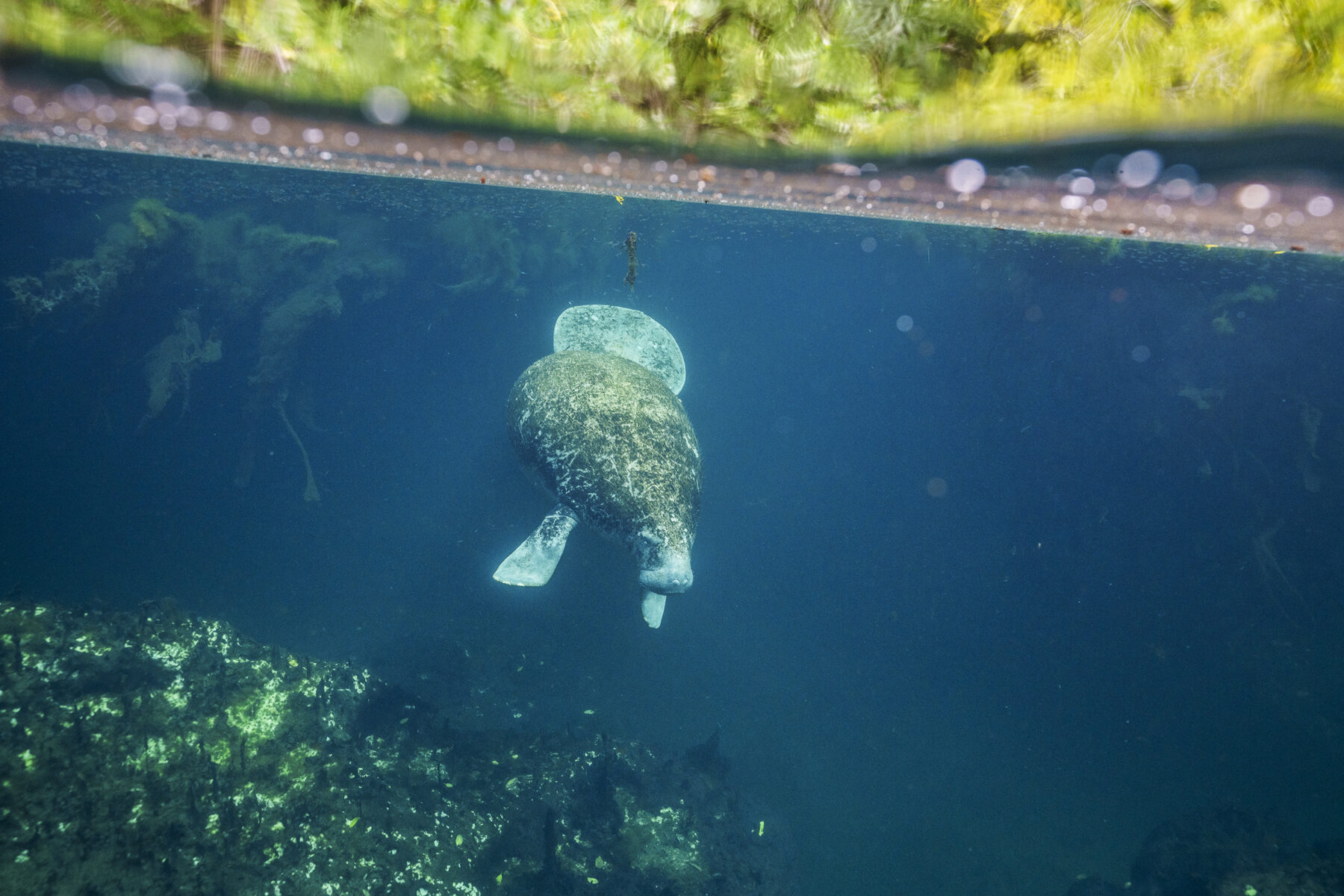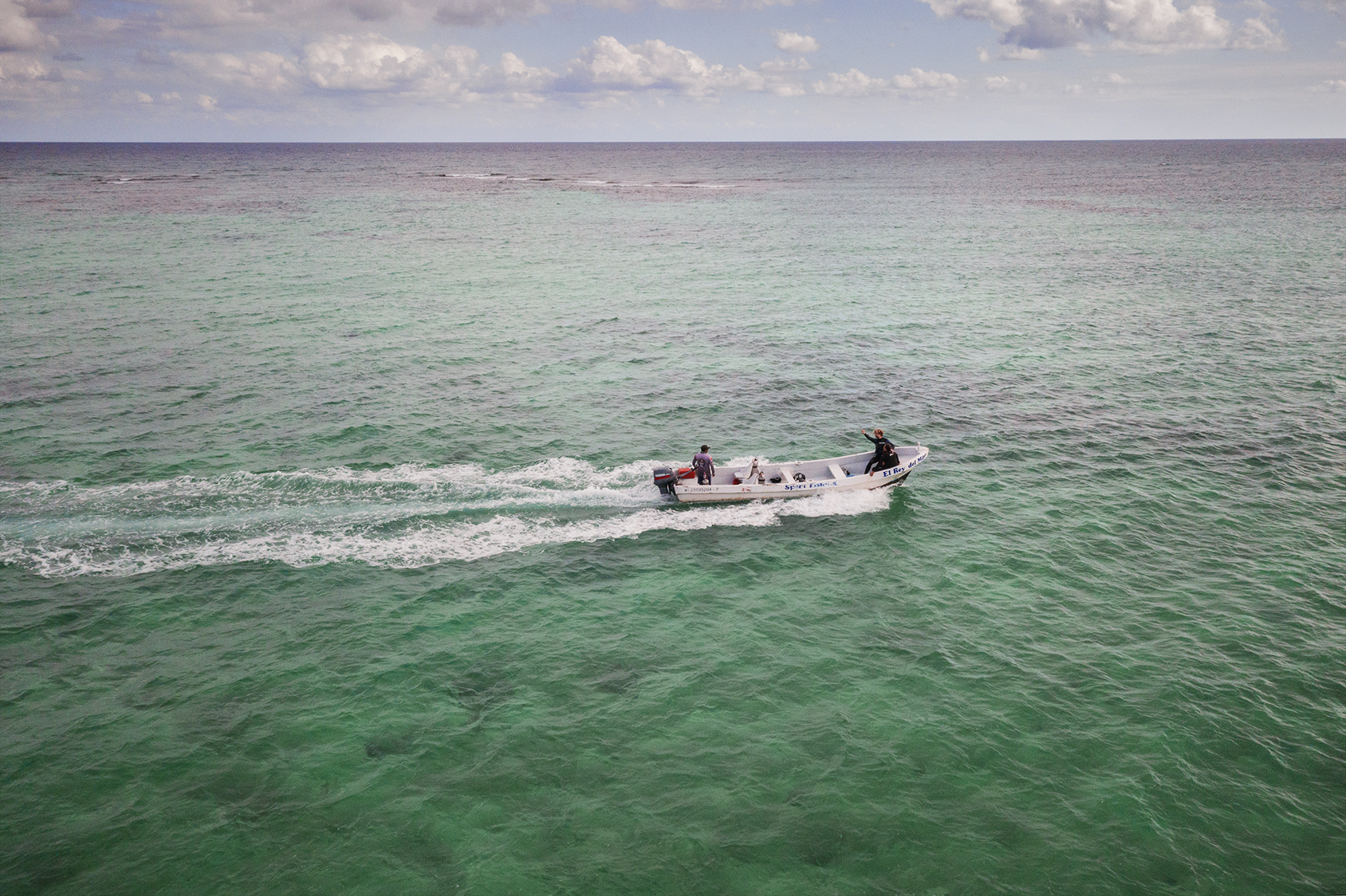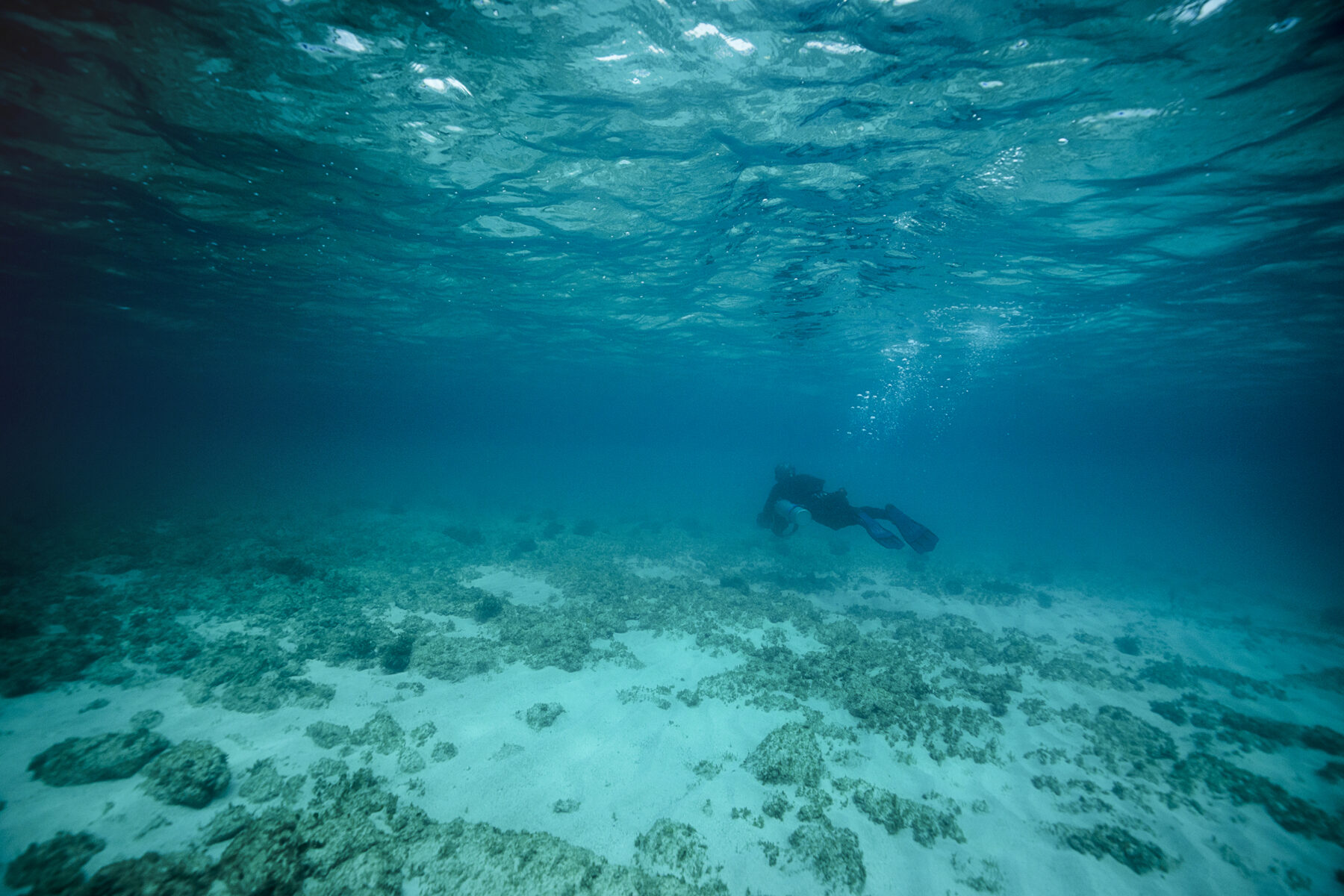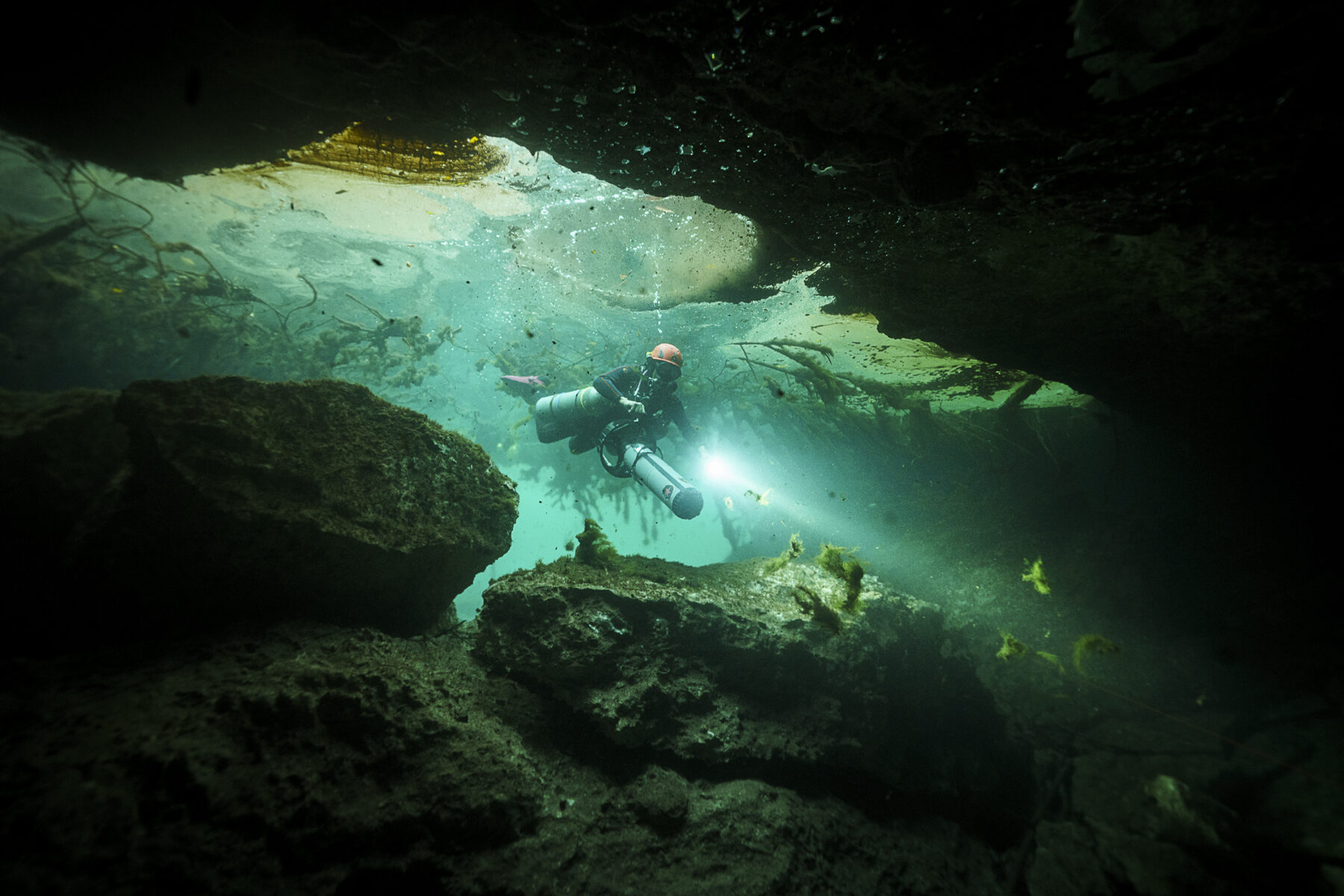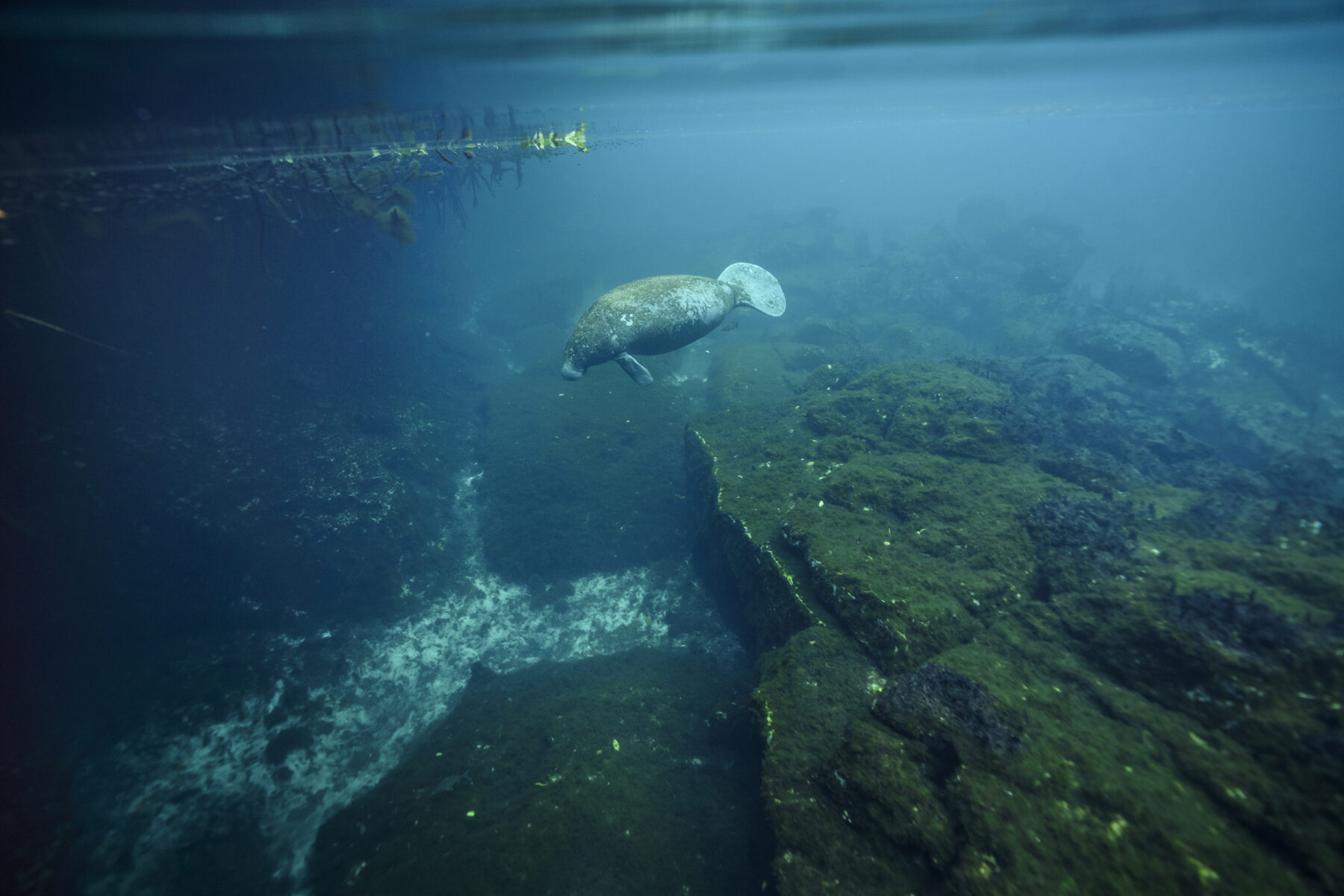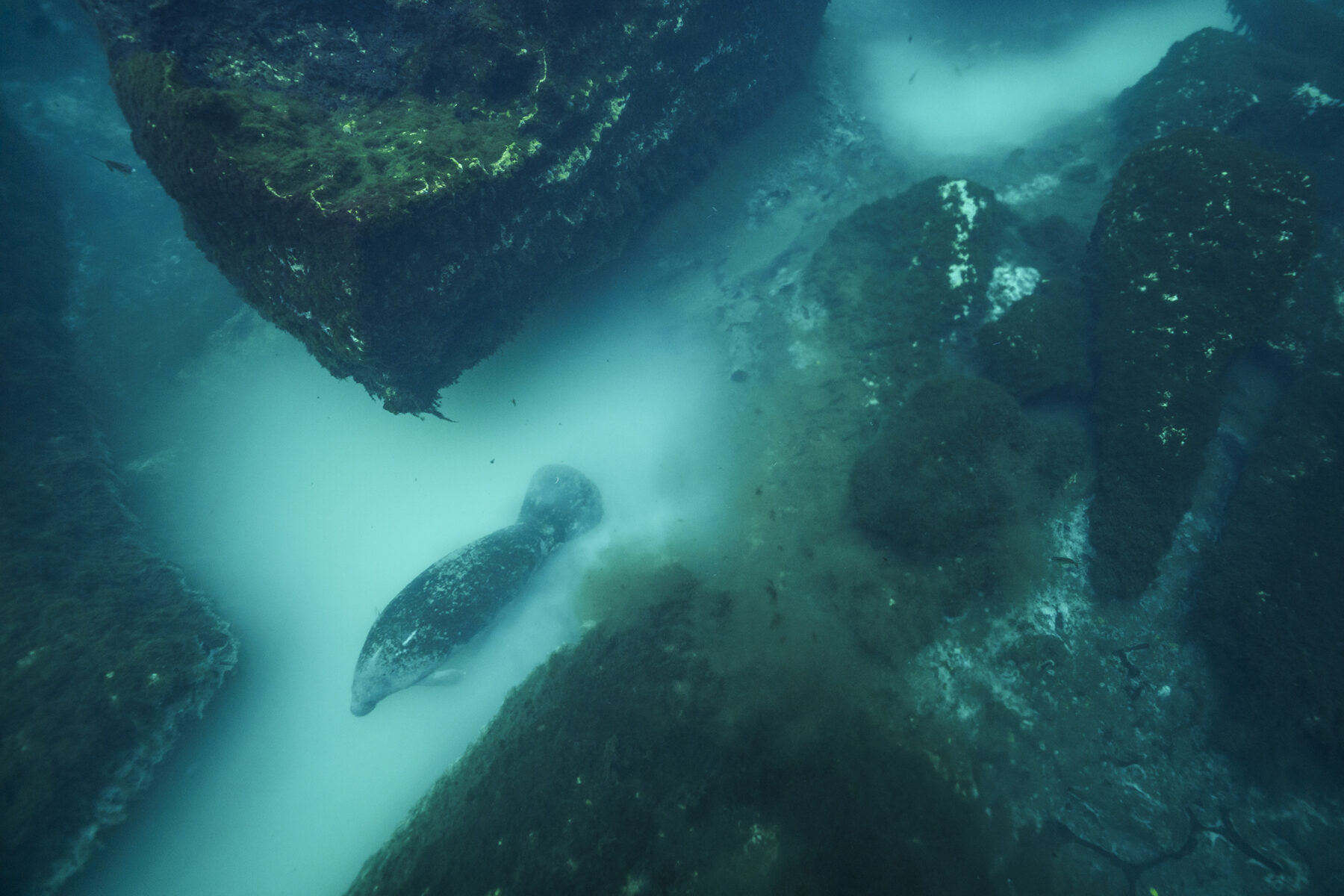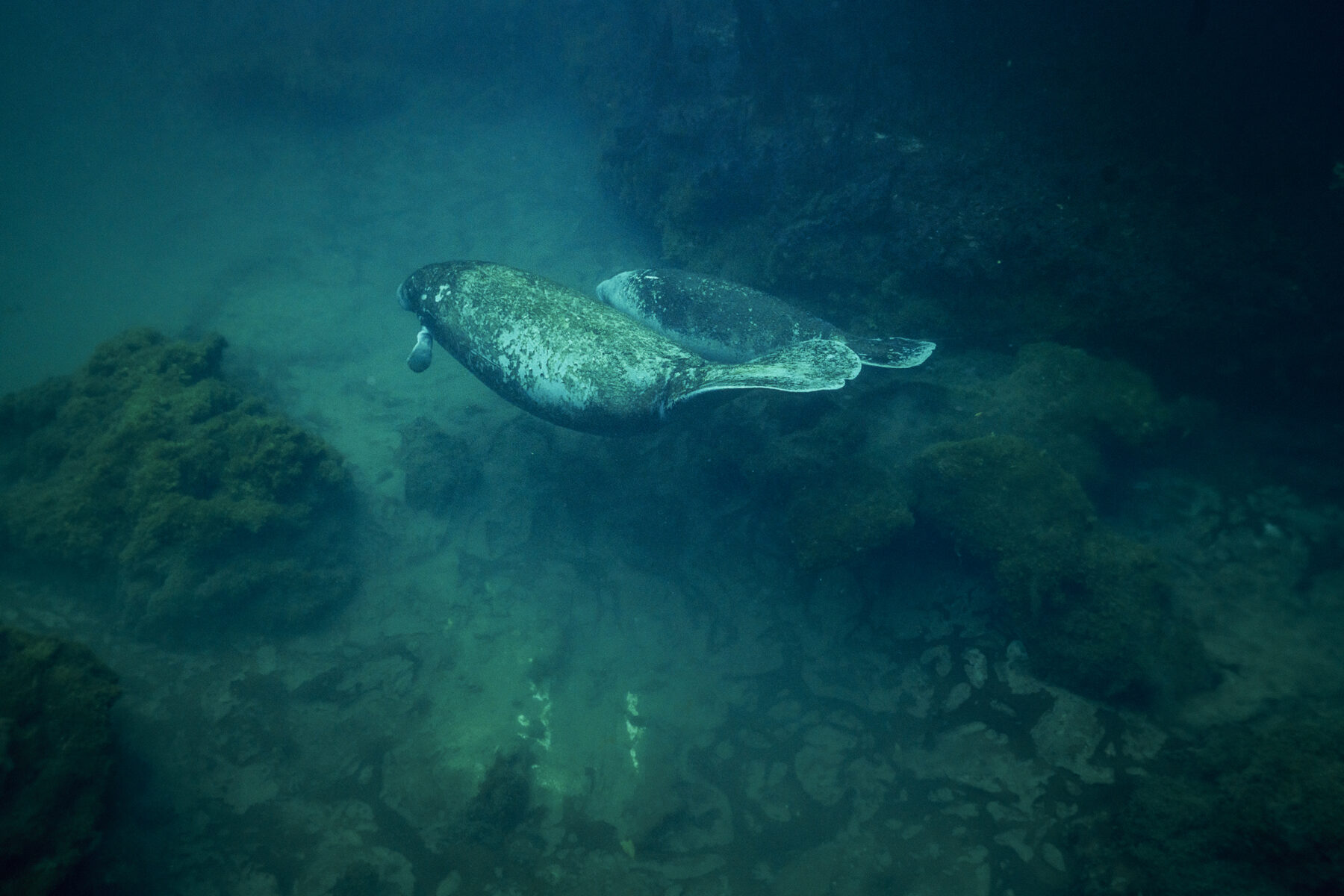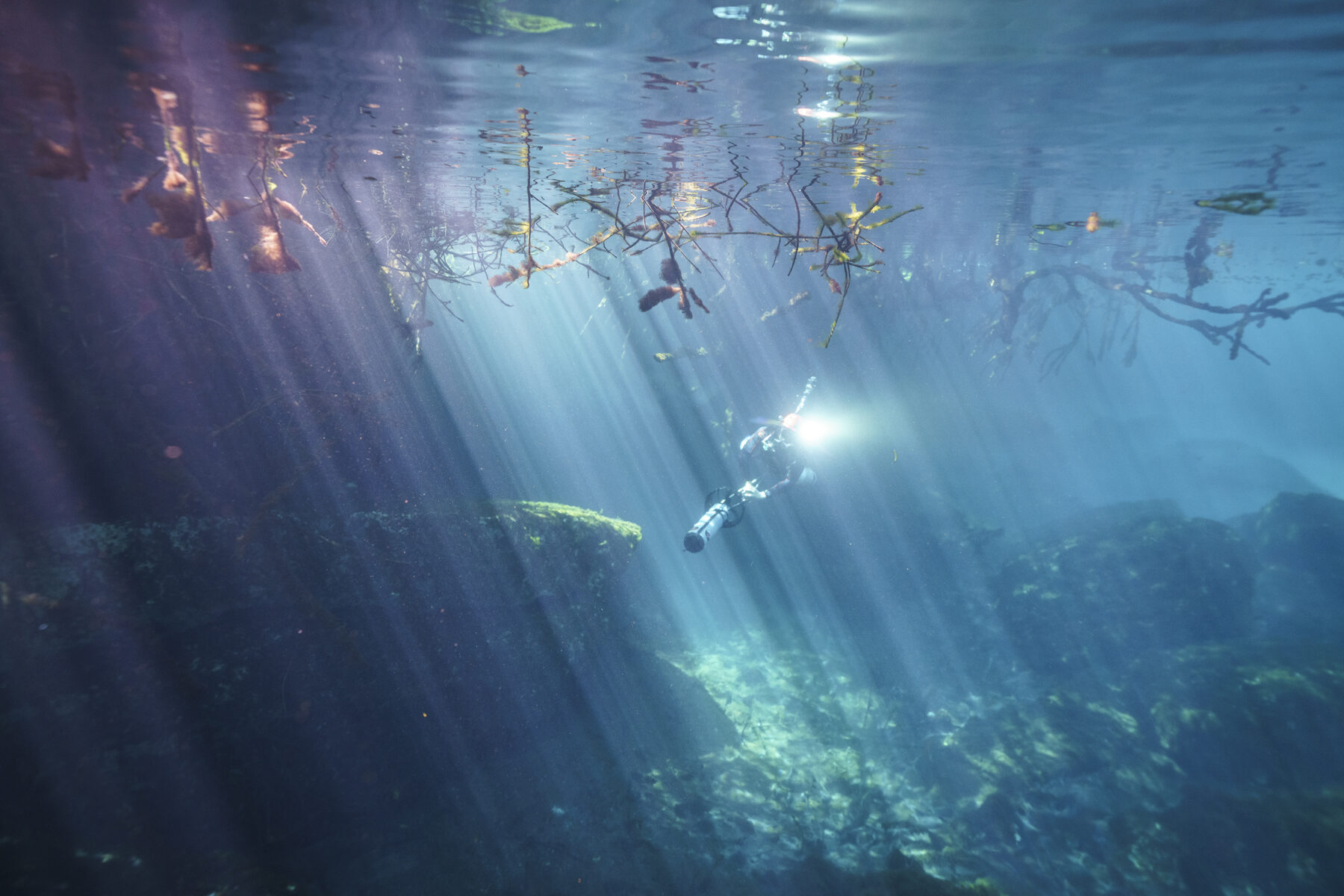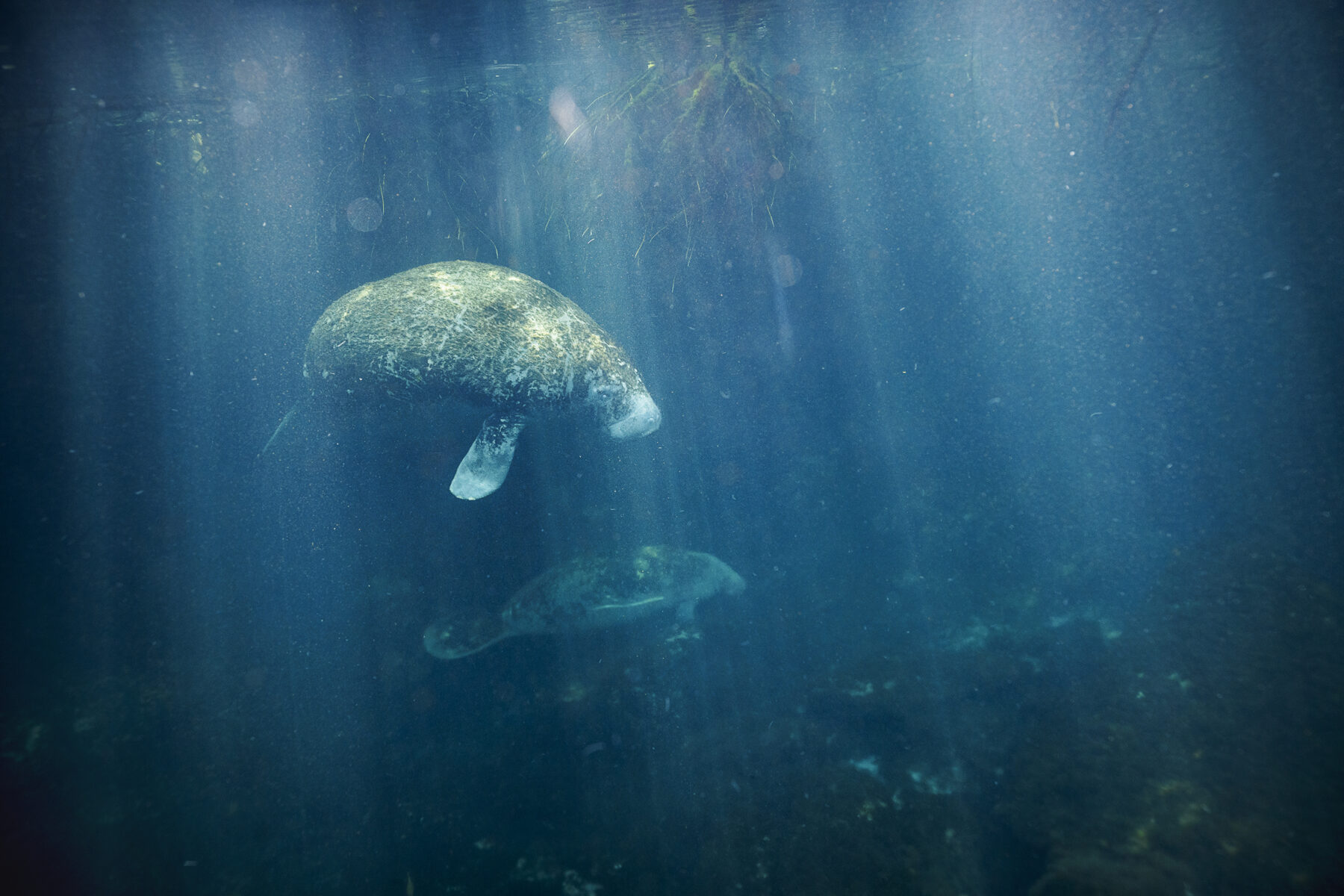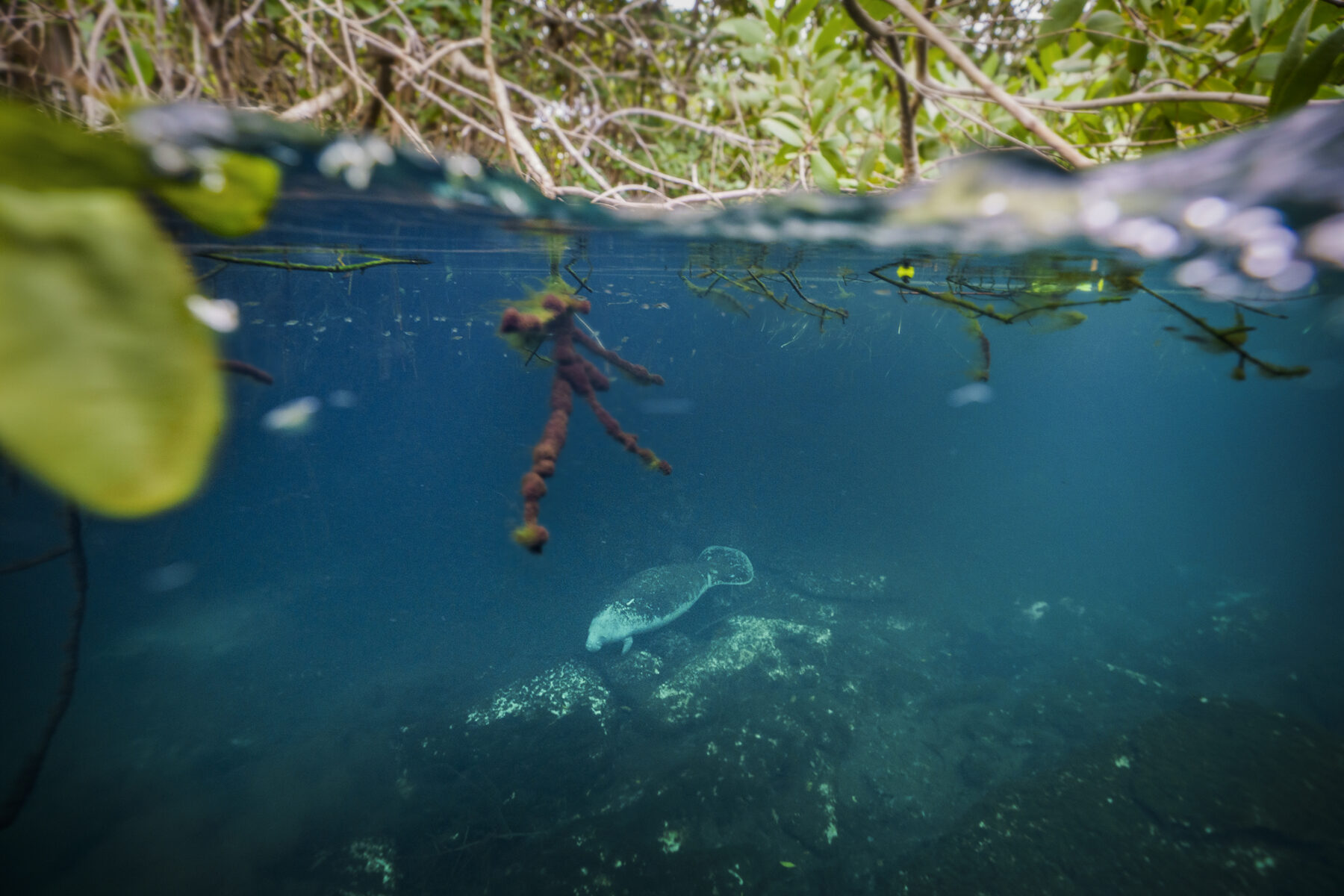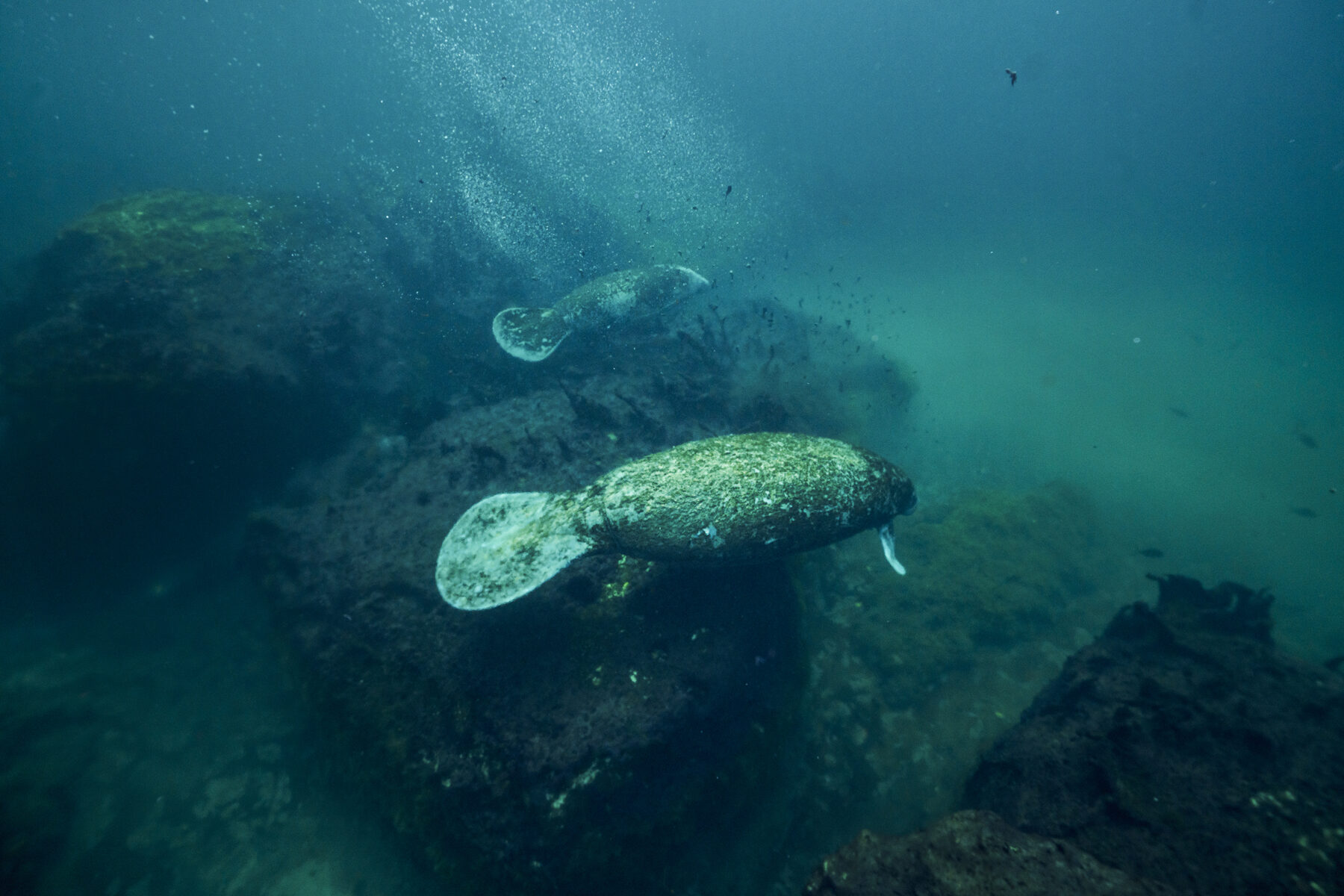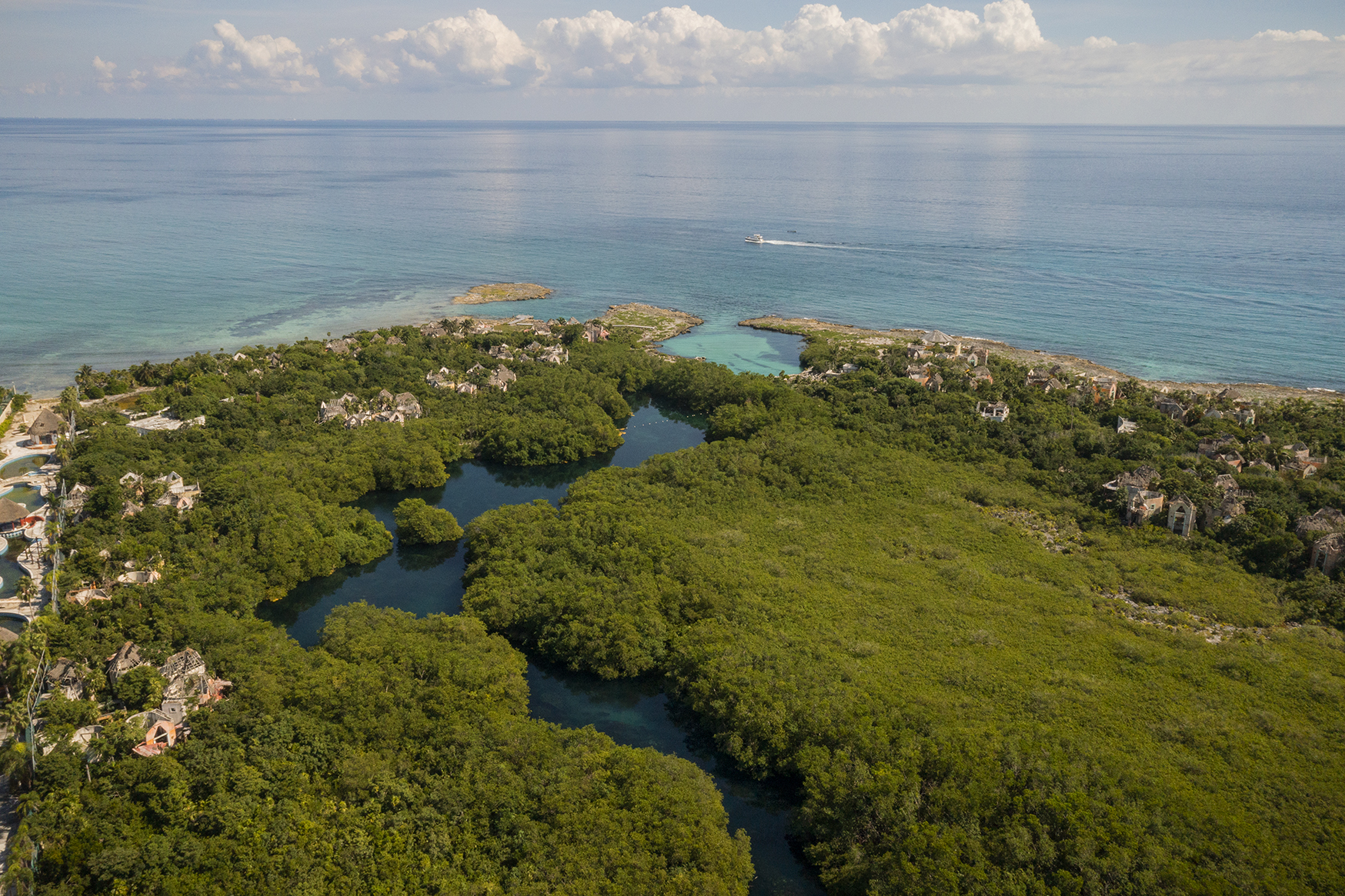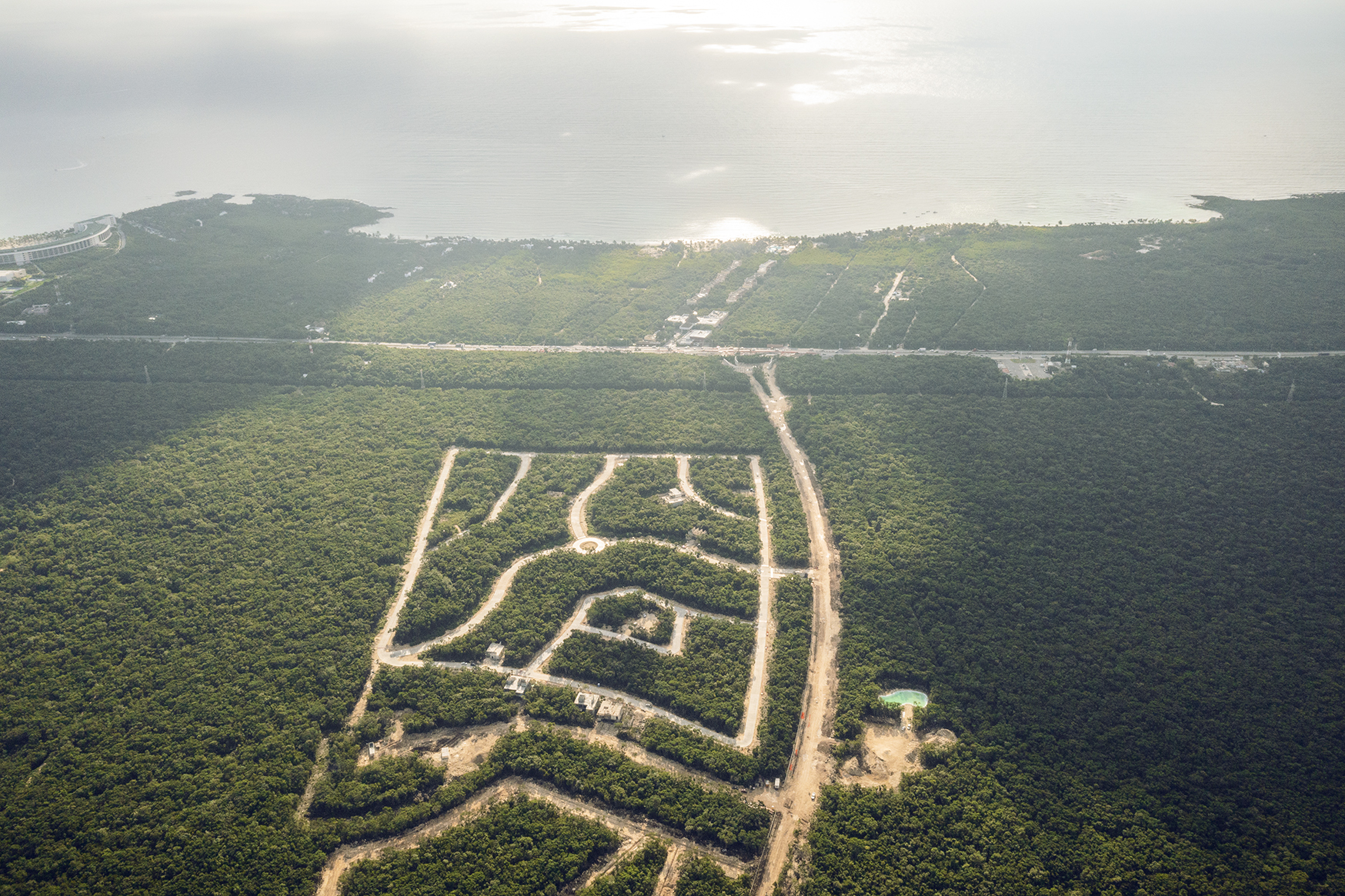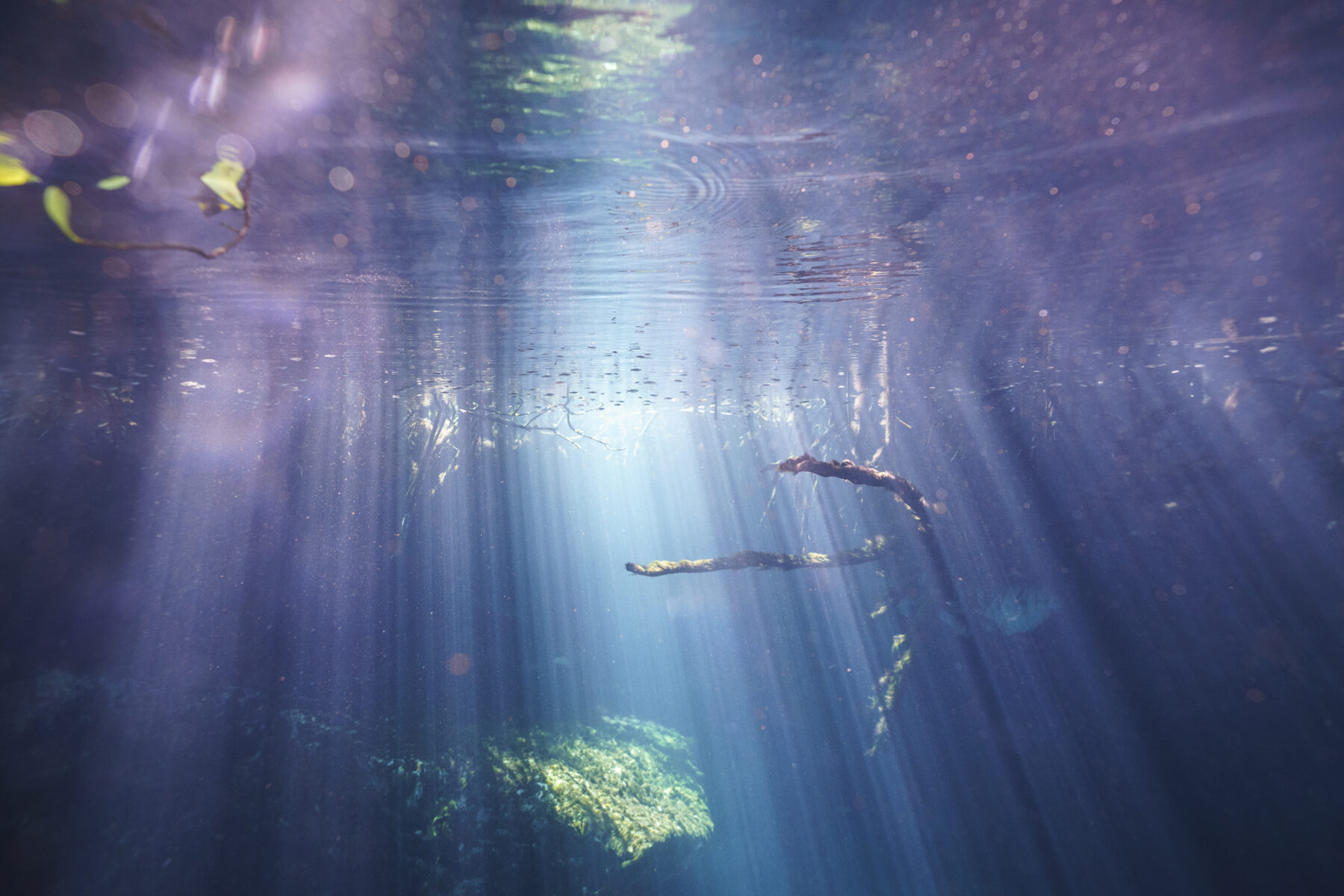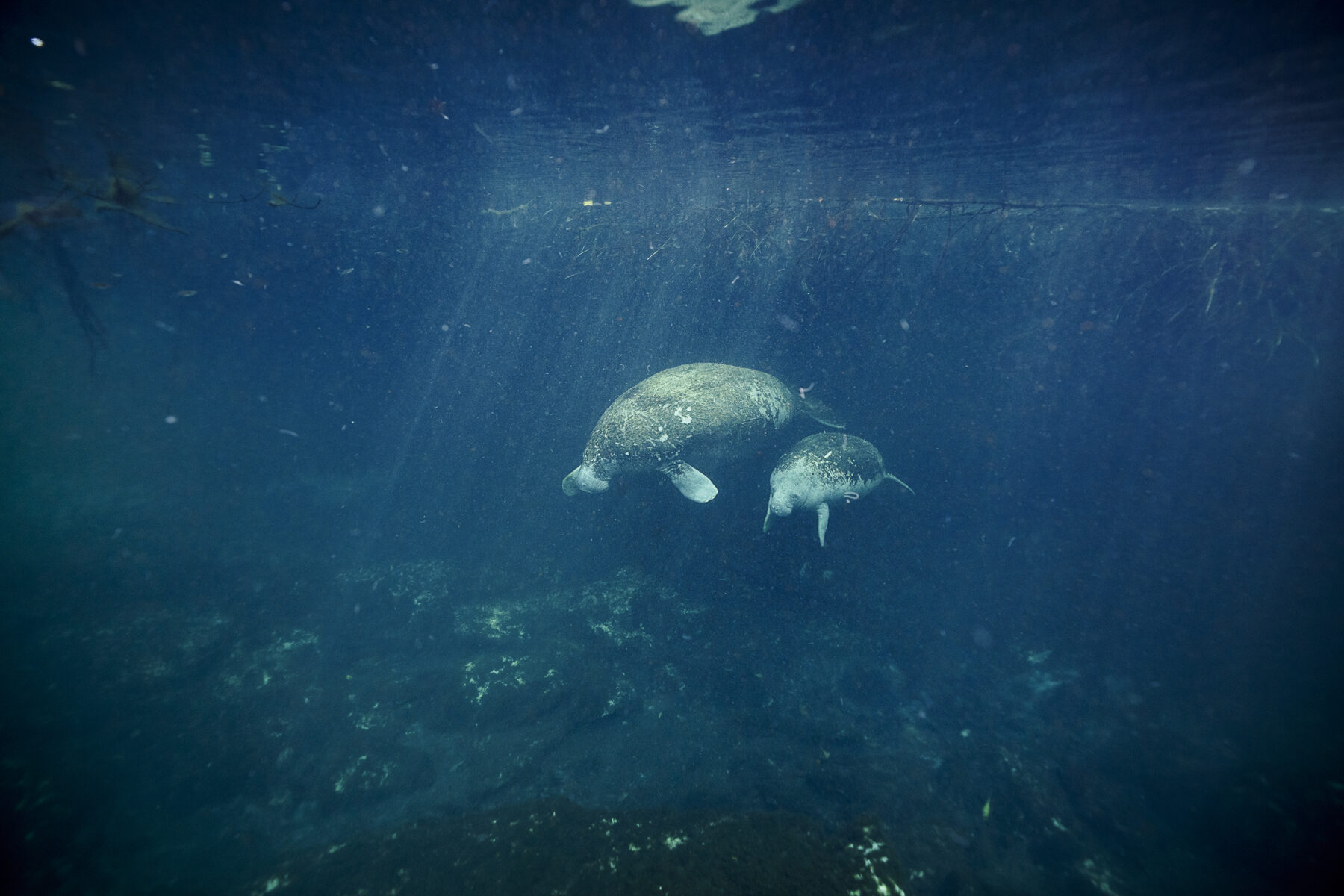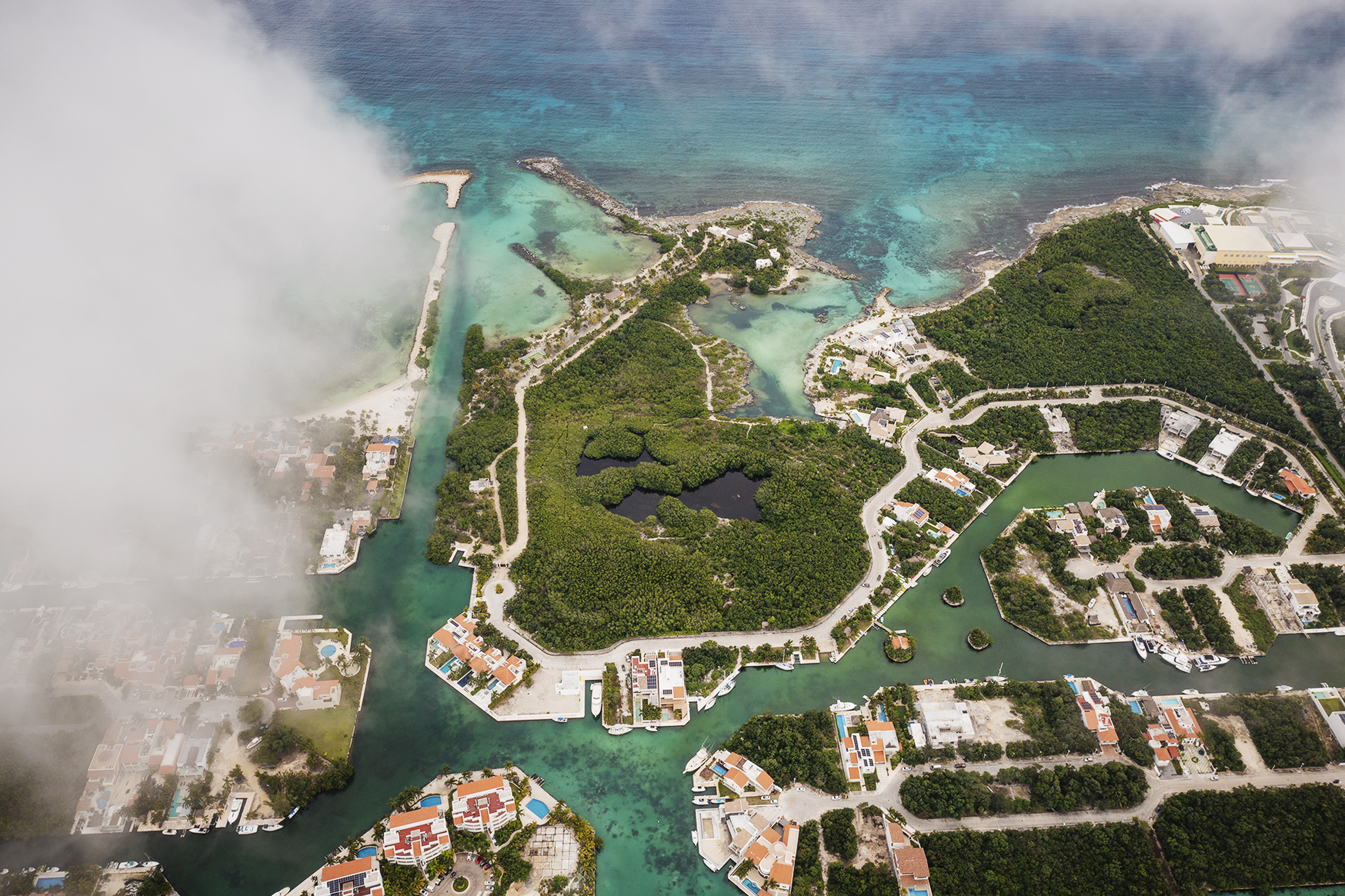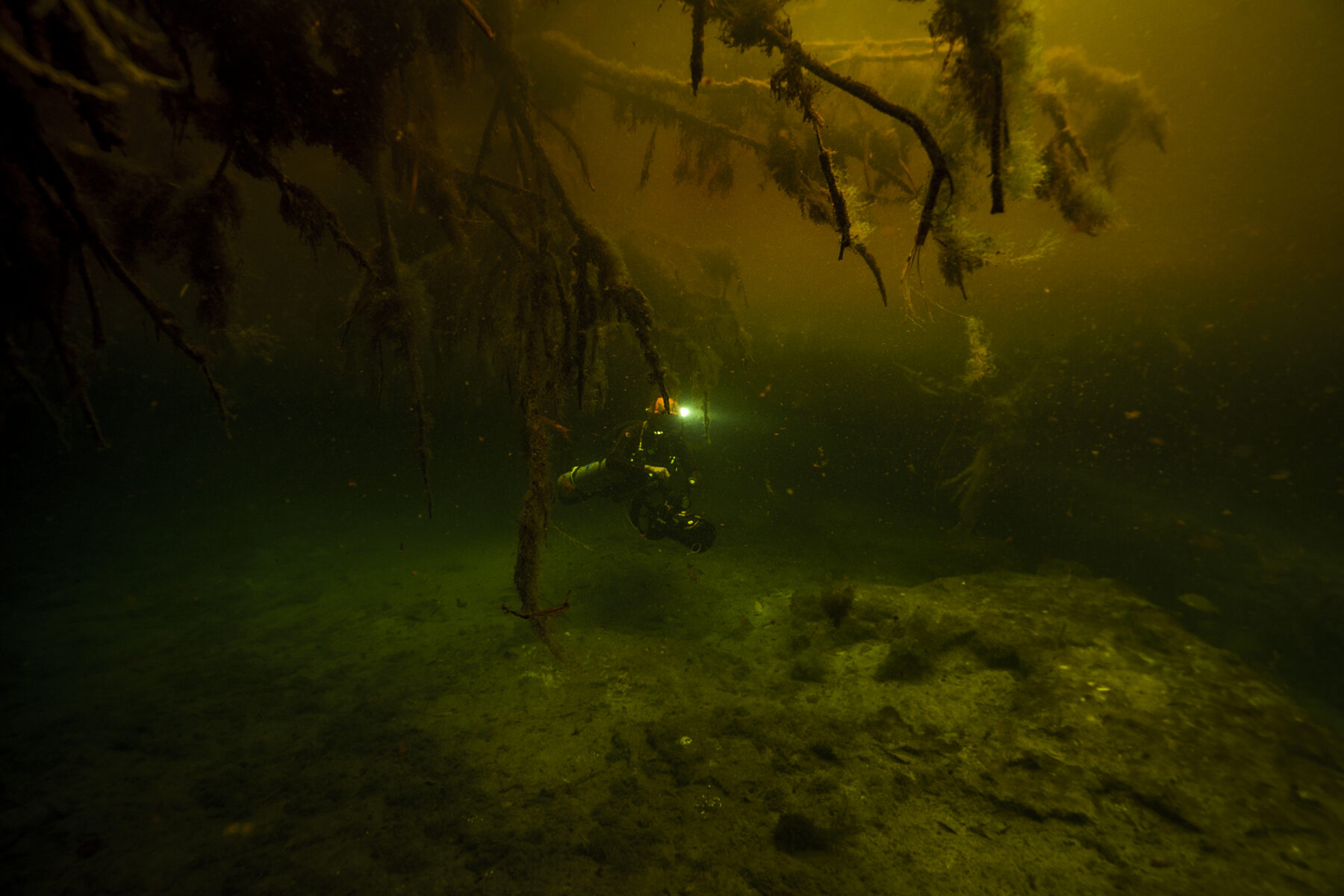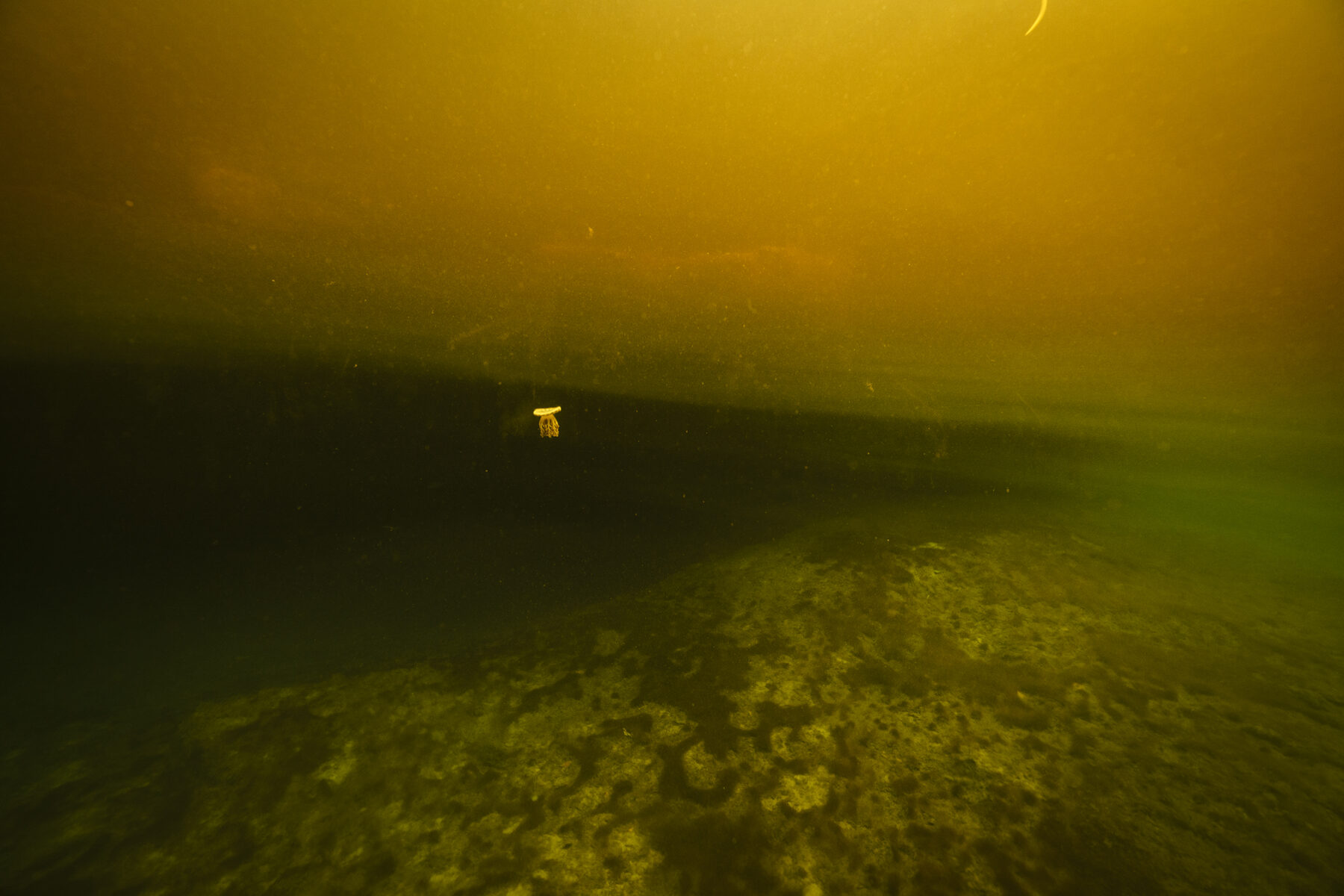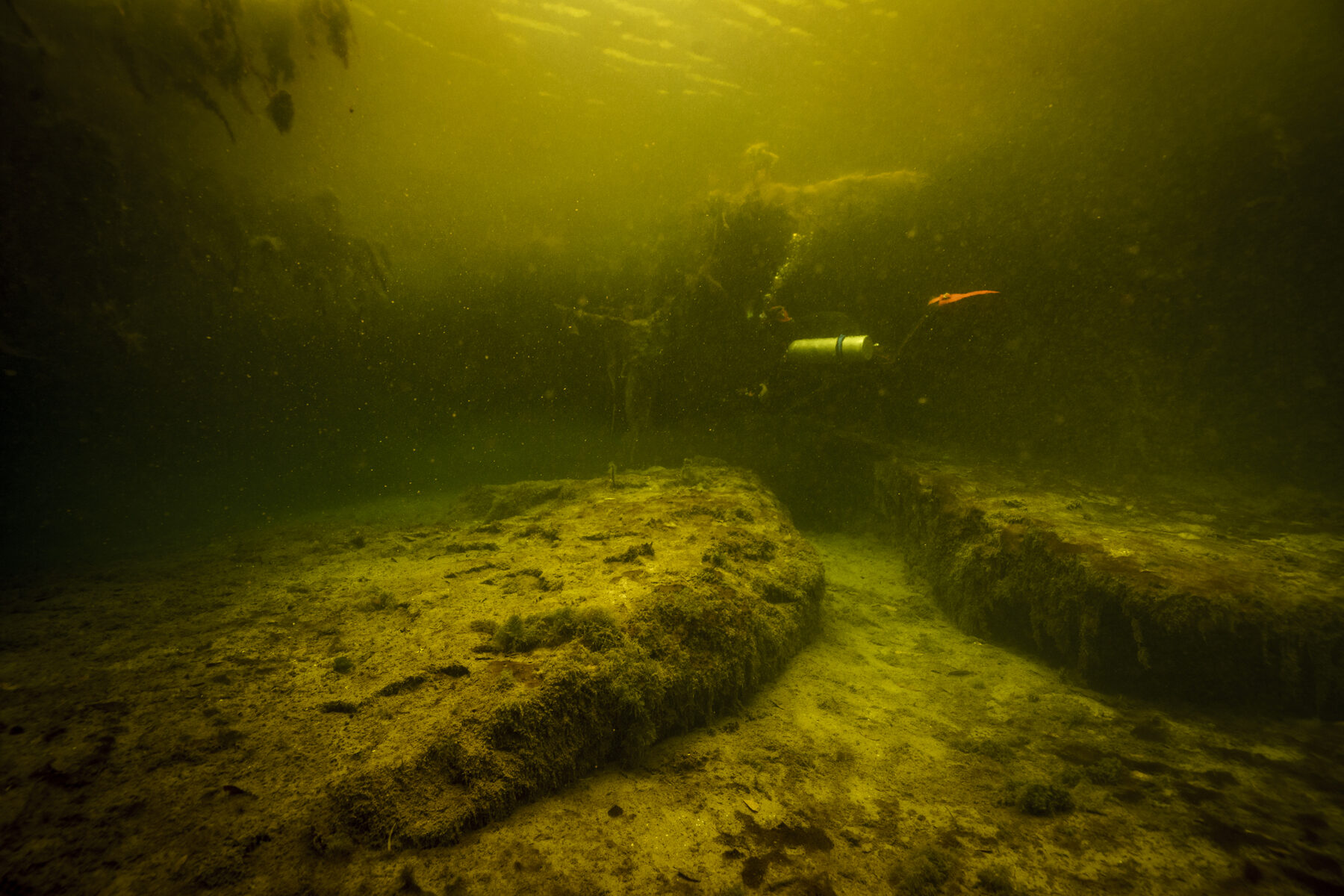Manatee Habitat Discovered
In this day and age we are still discovering magical natural habitats, pristine environments and intact ecosystems.
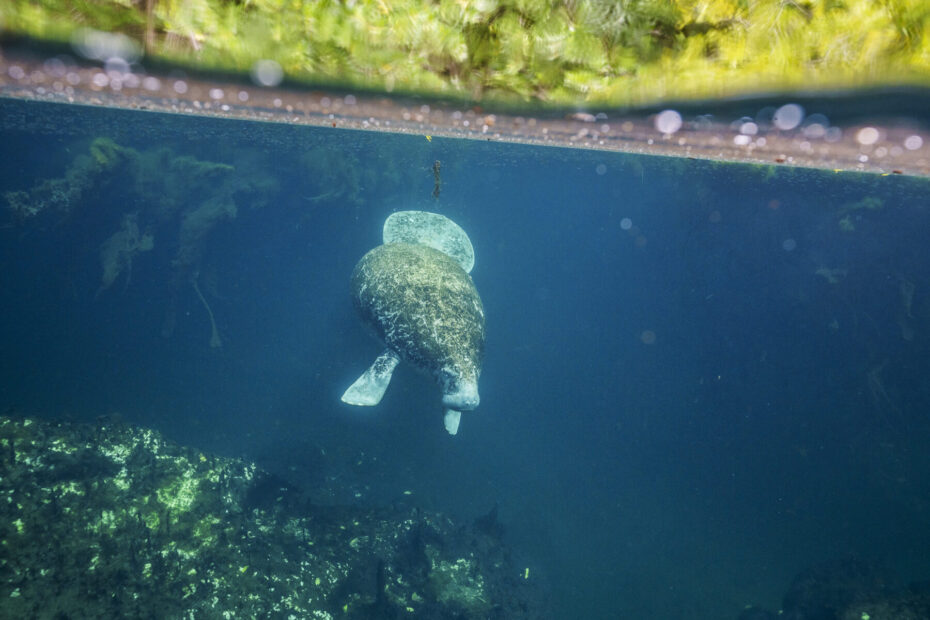
The Caribbean Sea has a marine protected area but the inland lagoon does not.
It is 2022 and we are still discovering magical natural habitats, pristine environments and intact ecosystems. This is an environmental story to celebrate, but also a call for conservation.
On the Yucatán Peninsula in Mexico a new manatee habitat has been discovered. Local cave instructor Luis Leal and explorer Klaus Thymann spent weeks diving and exploring, documenting a manatee mother and calf. The species is endangered: there are fewer than 200 in the Caribbean, and how few are in Mexico is unknown.
Manatees live for around 60 years and the calf stays with the mother for about two years. It is likely the manatees have been there for generations. Manatees share part of their genome with elephants and use memory for navigating the complex cave system.
From above it looks like a small lake, but the water actually connects to the ocean via an underground passage, so is in fact a coastal lagoon. The whole ecosystem relies on the flow of water between the sea and inland waterways, through rivers, caves, sinkholes (known as cenotes) and even through the porous limestone rock.
The location is a little complicated: Leal and Thymann had to cave dive to enter the lagoon, starting from a boat in the ocean and cave diving through channels under the shoreline to access the lagoon. The manatees travel seamlessly between the lagoon and the ocean. But while the ocean and the lagoon are two parts of the same thing for these mammals, in Mexican law they are treated differently. The Caribbean Sea has a marine protected area but the inland lagoon does not. It might sound like an absurd administrative error but the fact that they are indeed connected is not reflected in law.
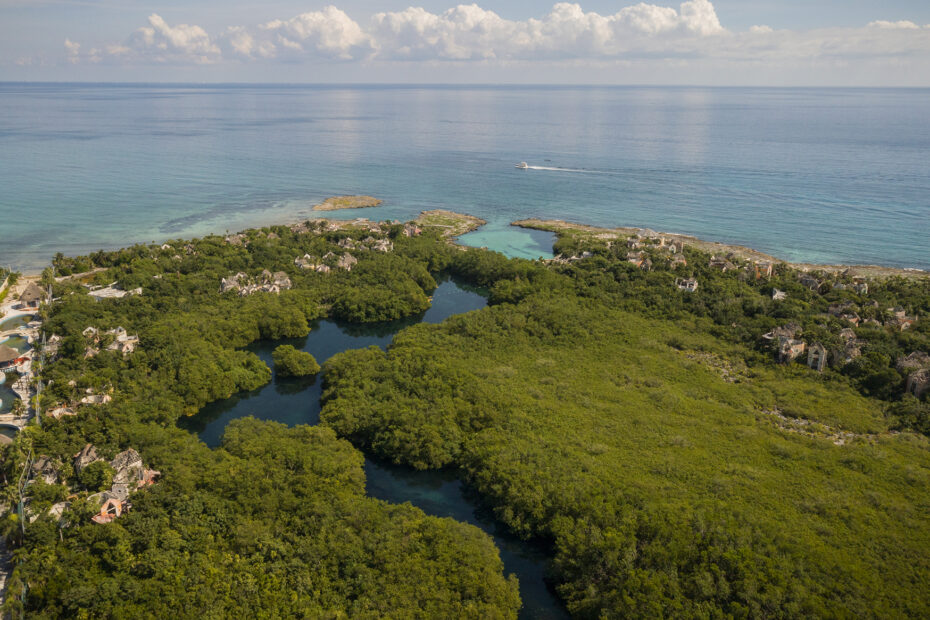
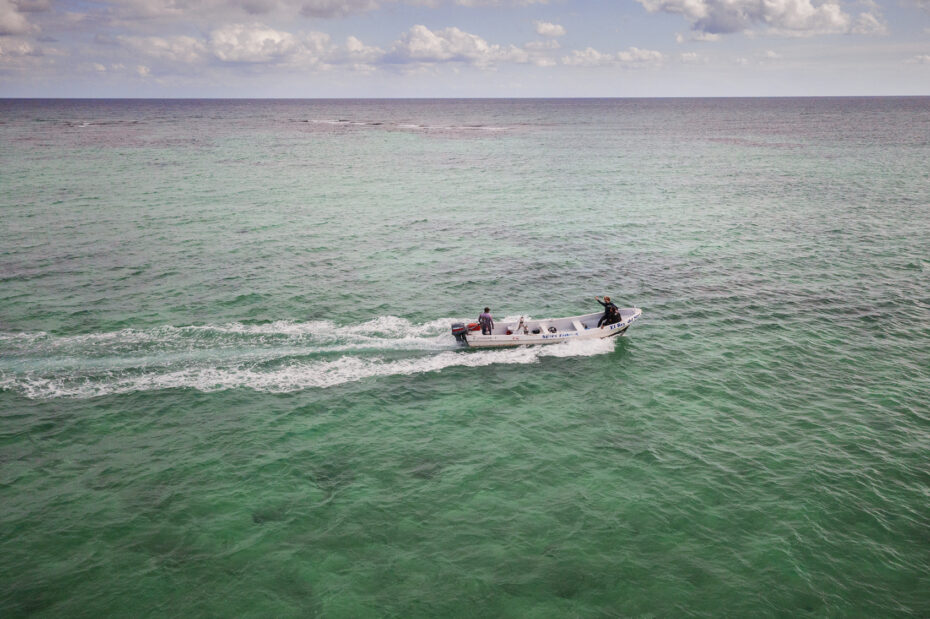
Urgent protection is needed as the habitat is under threat from vast infrastructure projects, tourism development, and sewage and nutrient deposits. The aim for the team is to secure protection for this unique ecosystem. This is a story of hope: going out to explore new frontiers, diving to unseen locations and coming face-to-face with unexplored natural wonders.
A cenote where the flow has been cut is now a toxic-looking jellyfish swamp.
With developments such as marinas, this vital flow can be cut, leaving the water stagnant and starved of oxygen so only bacteria and jellyfish can survive. To show the comparison, Leal and Thymann dived to a healthy lagoon and a cenote where the flow has been cut, which is now a toxic-looking jellyfish swamp.
A 12-minute film about the discovery was created, written and directed by Klaus Thymann with music by Thom Yorke and Kasper Bjørke. The film was produced in association with 5 Media and the Lighthouse Foundation.
